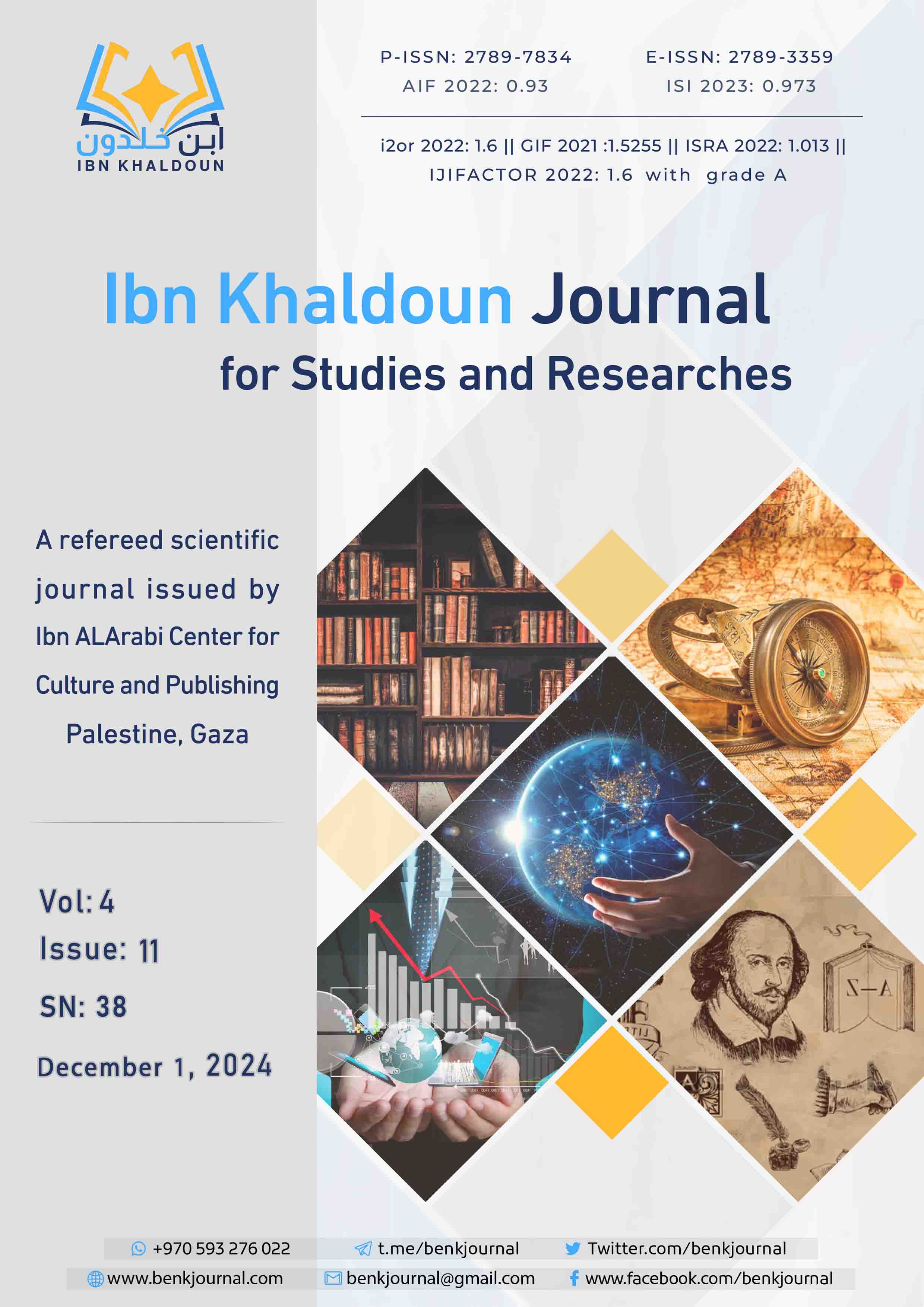Symbolism in Arabic Literature: Mourid Barghouti as a Model Symbolism in Arabic Literature: Mourid Barghouti as a Model
Main Article Content
Abstract
This study explores the concept of "symbolism" in Arabic literature, focusing on its role in the poetry of Mourid Barghouti as a model. It examines the evolution of symbolism through different literary eras, from traditional and religious symbols to mythological and natural symbols, and analyzes how Barghouti employs these symbols to reflect his experiences and views on Arab issues, particularly the Palestinian cause.
The study adopts an analytical methodology to study selected symbols in Barghouti's works, highlighting religious symbols such as Christ, historical symbols like Queen Bilqis, and mythological symbols inspired by Greek mythology. The study also examines the unique symbols Barghouti created to express his personal experiences.
The results reveal that symbolism is a fundamental element in Barghouti's poetry. He uses it to convey themes of resilience, national identity, and human suffering. The study underscores the importance of symbolism in enriching poetic texts and deepening their meanings, enabling readers to gain a profound understanding of the human experience in literature.
Key conclusions include Barghouti's strategic use of various types of symbols—religious, historical, mythological, and natural—to deepen meaning and evoke connections between the past and the present. His use of natural symbols represents renewal and resilience.
The study recommended further studies on symbolism in modern Arabic literature, increased focus on traditional and religious symbols in Arabic poetry, the development of educational curricula to include the analysis of literary symbols, and the establishment of a database of key literary symbols in Arabic poetry. Additionally, it suggested exploring audience interaction with literary symbols, focusing on their reception in modern Arabic poetry.
Metrics
Article Details

This work is licensed under a Creative Commons Attribution-NonCommercial 4.0 International License.
References
Ramani, Ibrahim. (1991). Ambiguity in Modern Arabic Poetry (1st ed.). Algiers: Diwan of University Publications.
Ibn Rishiq. (1981). Al-‘Umda fi Sina‘at al-Shi‘r wa Naqdihi (Edited by Al-Nabawi Abdul Wahid Sha'lan, Vol. 1). Beirut: Dar al-Jil.
Al-Kirawi, Idris. (2014). Rhetoric of Narrative in Arabic Novels (1st ed.). Rabat, Morocco: Dar al-Aman.
Hasab Allah, Baha. (2001). Literary Life in the Era of Early Islam: History and Taste. Cairo: Dar al-Fikr al-‘Arabi.
Khafaji, Muhammad Abdul Moneim. (1995). Modern Literary Criticism Schools (1st ed.). Cairo, Egypt: Dar al-Masriya al-Lubnaniya.
Atmesh, Mohsen. (1986). A Critical Study of Artistic Phenomena in Contemporary Iraqi Poetry. Baghdad, Iraq: Ministry of Culture and Information, Dar al-Shu'un al-Thaqafiya.
Al-Batal, Ali. (1982). Mythological Symbolism in Al-Sayyab's Poetry. Kuwait: Al-Rabi‘at Publishing and Distribution Company.
Zayed, Ali Ashri. (2002). On the Construction of the Modern Arabic Poem (4th ed.). [Place of Publication Not Specified]: Ibn Sina Library.
Al-Zoubi, Ahmad. (2000). Intertextuality: Theoretical and Applied. Jordan: Ammon Publishing and Distribution Foundation.
Al-Jiouzi, Salma Khadra. (2007). Trends and Movements in Modern Arabic Poetry (Translated by Abdul Wahid Lou’lo’a, 2nd ed.). Beirut, Lebanon: Center for Arab Unity Studies.
Nasr, Atef Joudah. (1998). Poetic Symbolism in Sufism. Cairo, Egypt: Egyptian Publishing and Distribution Office.
Al-Ashmawi, Muhammad Zaki. (1997). Issues of Literary Criticism Between the Old and the Modern. Cairo, Egypt: Dar al-Fikr al-‘Arabi.
Zayed, Ali Ashri. (2002). On the Construction of the Modern Arabic Poem (4th ed.). Cairo, Egypt: Ibn Sina Library.
Al-Khatib, Imad. (2006). The Artistic Image Mythologically. Amman, Jordan: Dar Juhayna Publishing and Distribution.
Bou Zawadi, Muhammad. (2009). Dictionary of Literary Terms. Algiers: National Book House.
Al-Kawaz, Muhammad Karim. (2006). Rhetoric and Criticism (1st ed.). Beirut, Lebanon: Dar al-Intishar al-Arabi.





